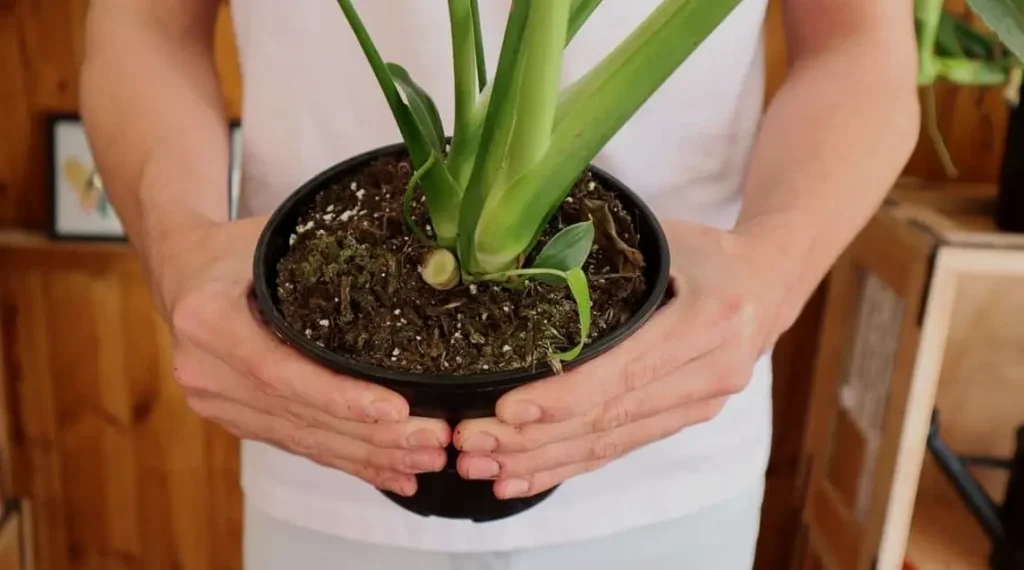Monstera plants, with their distinctive split leaves and lush green foliage, have become a favorite among houseplant enthusiasts. Known for their ability to add a touch of tropical elegance to any space, these plants thrive best when their soil needs are met. In this article, we will explore the essential components of the perfect soil for Monstera, ensuring your plant grows healthy and vibrant.
Understanding Monstera’s Natural Habitat
Before diving into the specifics of soil composition, it’s important to understand Monstera’s natural habitat. Native to the tropical rainforests of Central and South America, Monstera plants grow as epiphytes, meaning they often live on other plants and trees, deriving nutrients from the air, rain, and debris around them. This unique lifestyle provides insight into the type of soil that suits them best.

Key Characteristics of Ideal Monstera Soil
1. Well-Draining
The most critical aspect of Monstera soil is its ability to drain well. In their natural habitat, Monstera plants are accustomed to heavy rains that drain quickly through the forest floor. To replicate this, the soil must not retain water for extended periods, which can lead to root rot and other issues.
Components for Good Drainage:
- Perlite: Helps aerate the soil and improve drainage.
- Pumice: Similar to perlite, it aids in preventing soil compaction.
- Sand: Adds to the soil’s draining capability without retaining much moisture.
2. Nutrient-Rich
While Monstera plants can survive in low-nutrient conditions, they thrive in soil rich in organic matter. This provides the necessary nutrients for growth and vibrant foliage.
Components for Nutrient-Rich Soil:
- Compost: A fantastic source of nutrients that enhances soil structure.
- Worm Castings: Rich in beneficial bacteria and nutrients, promoting healthy plant growth.
- Coco Coir: Retains moisture while providing good aeration and contributing organic matter.
3. Slightly Acidic to Neutral pH
Monstera plants prefer soil with a pH ranging from 5.5 to 7.0. This slightly acidic to neutral range allows optimal nutrient uptake.
Testing and Adjusting Soil pH:
- Soil Test Kits: Easily available and straightforward to use.
- Lime: Can be added to increase pH if the soil is too acidic.
- Sulfur: Lowers the pH if the soil is too alkaline.

Creating the Perfect Monstera Soil Mix
Now that we understand the key characteristics, let’s put together a soil mix that combines these elements. Here’s a recommended recipe:
Monstera Soil Mix Recipe:
- 40% Potting Soil: A good base that offers some organic material.
- 20% Perlite or Pumice: Enhances drainage and aeration.
- 20% Coco Coir or Peat Moss: Retains moisture without becoming waterlogged.
- 10% Compost or Worm Castings: Provides essential nutrients.
- 10% Orchid Bark: Mimics the natural growing environment and improves drainage.
Steps to Mix the Soil:
- Measure Ingredients: Use the recommended proportions for your batch size.
- Combine Dry Ingredients: Mix the potting soil, perlite or pumice, coco coir, and orchid bark thoroughly.
- Add Compost or Worm Castings: Integrate the nutrient-rich components evenly throughout the mix.
- Check Moisture Retention: Slightly dampen the soil mix to test its consistency. It should hold together when squeezed but crumble easily.

Planting and Repotting Monstera
Proper soil is just one part of ensuring your Monstera thrives. Planting and repotting techniques also play crucial roles.
Planting a New Monstera
When planting a new Monstera, choose a pot with drainage holes to prevent water from sitting at the bottom. Fill the pot with your prepared soil mix, place the plant, and gently pack the soil around the roots. Water thoroughly, allowing excess water to drain out.
Repotting Monstera
Monstera plants generally need repotting every 1-2 years as they outgrow their pots. Signs that your Monstera needs repotting include roots growing out of drainage holes, the soil drying out quickly after watering, and stunted growth.
Steps for Repotting:
- Choose a Larger Pot: Select a pot 1-2 inches larger in diameter than the current one.
- Prepare the Soil Mix: Use the same soil recipe mentioned earlier.
- Remove the Plant: Carefully take the Monstera out of its current pot, gently loosening the roots.
- Position and Fill: Place the plant in the new pot, filling in around the roots with fresh soil mix.
- Water and Settle: Water thoroughly and allow excess water to drain.

Common Soil-Related Issues and Solutions
Despite your best efforts, soil-related issues can still arise. Here are some common problems and how to address them:
1. Overwatering and Root Rot
Symptoms:
- Yellowing leaves
- Mushy stems
- Foul smell from the soil
Solution:
- Ensure proper drainage and avoid overwatering.
- Remove affected parts and repot with fresh, dry soil.
2. Poor Growth and Yellow Leaves
Symptoms:
- Stunted growth
- Yellowing, especially in older leaves
Solution:
- Check soil pH and nutrient levels.
- Consider adding more compost or worm castings to enrich the soil.
3. Pests and Fungal Issues
Symptoms:
- Mold or fungus on the soil surface
- Presence of pests like fungus gnats
Solution:
- Improve air circulation around the plant.
- Allow the soil surface to dry between waterings.
- Use organic pest control methods if necessary.

Conclusion
Providing the perfect soil for your Monstera plant is crucial for its health and growth. By ensuring well-draining, nutrient-rich soil with the right pH, you can create an environment that closely mimics its natural habitat. Regular monitoring and adjusting your soil mix as needed will help your Monstera thrive, rewarding you with lush, vibrant foliage.
Remember, every Monstera is unique, and observing your plant’s response to its soil will guide you in making the necessary adjustments. With the right care and attention, your Monstera will continue to be a stunning centerpiece in your home.

Leave a Reply